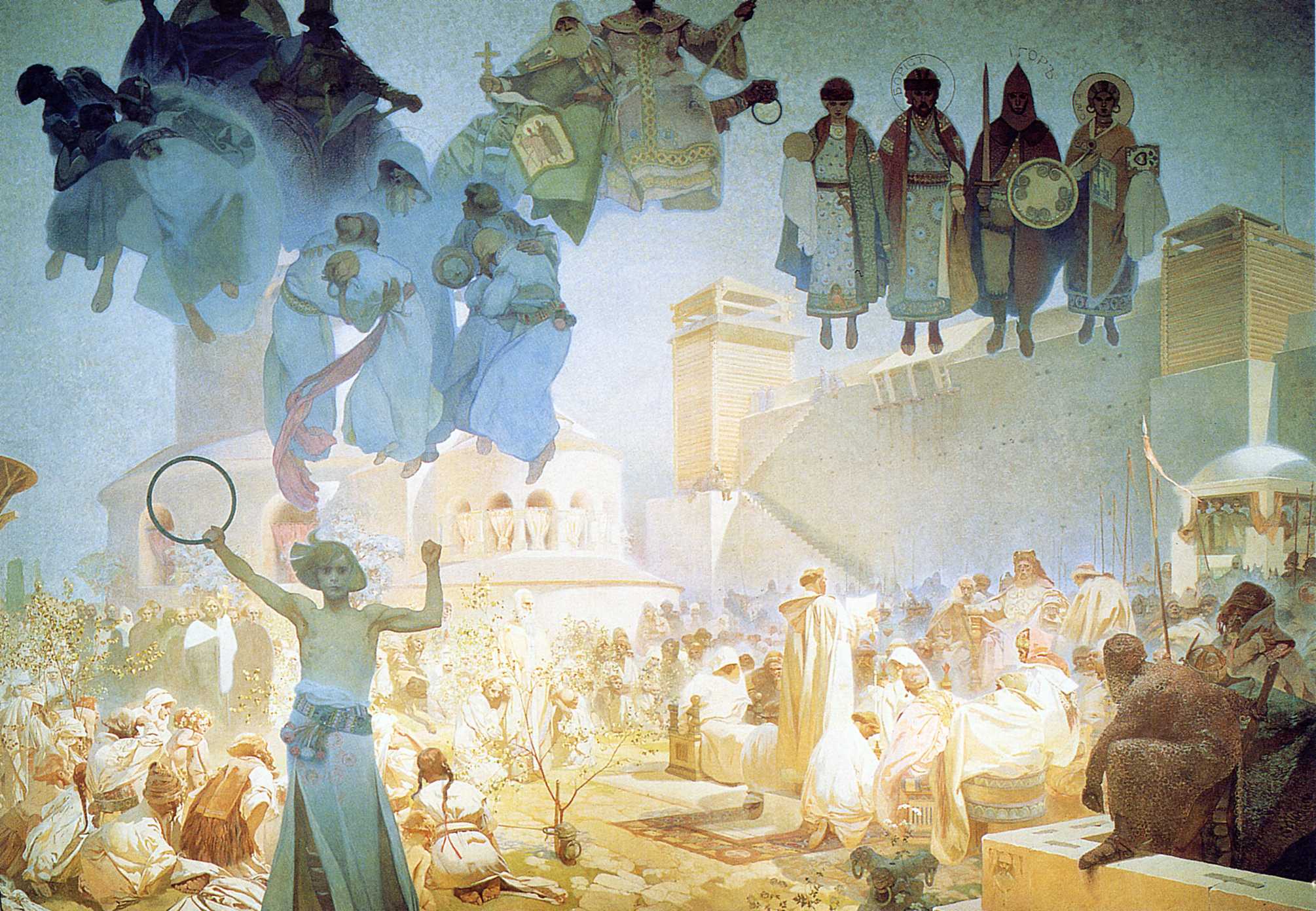Biography of Katsushika Hokusai
Katsushika Hokusai (1760 - 1849)
Katsushika Hokusai ("Painting Maniac") was one of the first Japanese artists to gain international recognition, and he has been inspiring artists around the world.
His date of birth cannot be determined, but it is presumed that he was born on October 30, 1760 - September 23, the 10th year of the Japanese calendar.His father, the son of unknown parents, was adopted at the age of 4 and is believed to be Nakajima Ise, the official mirror manufacturer of the country's shogun.However, Hokusai was never accepted as heir - a fact that has led some art historians to believe that his mother was a concubine.
Katsushika Hokusai has no surname, his name is Katsushika, taken from his hometown.During his lifetime, he used more than 30 different names and always changed with each new cycle of his work.This is a very common practice among Japanese artists to highlight each stage of their art.
Little is known about his early life.At around the age of 15, he began to carve wooden panels for printmaking, developing his painting entirely on his own.
Shunlu period (1778-1794)
In 1779, Katsushika Hokusai entered the studio of Katsukawa Junxiang as a student. Katsukawa Junxiang was an influential pop artistKabukiActors (Japanese popular dramas, born in the 16th century) are famous for their portraits.Here he became a designer and signed his first printShunrõ(It means the light of spring.)During this 15-year period of study, the young artist revealed a sensitivity to the influence of different genres of designers and discovered the Western perspective that would nourish his work until the very end.After Sun Xiang's death, Hokusai stayed in the master's studio under the guidance of his main disciple Toshiko.However, his prints began to incorporate elements of shadow, color, and perspective that he saw in Western works, which likely led to his expulsion from the studio.This rejection will be the centerpiece of his careerTurning PointAs he himself emphasized:
"What really drove my artistic style was the embarrassment I suffered at Toshiko's hands."
Sorian period (1794-1805)
Due to his curiosity about new technologies and expressions (a characteristic of his personality, free from Japan's aversion to foreign influence), Katsushika Hokusai has somehow absorbed Western perspectives.When he adopts "Sıri"This signHis work has undergone a tremendous transformation, approaching JapanLin PaiSchool of Decoration.He traded prints for an illustrated calendar (selfish) and luxury prints for private use (surimono), established himself as a master in the genre, and became a comic poetry collection illustration art (kyokaThe most important artist in the world.During this time, he began to create landscape paintings and works, and their themes became his favorite.The painter Hokusai was born here...

An Oroqui and two Allah in Nakamachi (1793-1797) enjoy the cherry blossoms in full bloom, Surinomo, Signature Hokusai Sãrigiá, Paris Guimet Museum
Perriodor Katsushika Hokusai (1805-1810)
From 1800 onwards, north of himfast("Polaris's Studio", the name is related to the Mirage Buddhist sect, the incarnation of Polaris).During this period, their signatures will alternate:Reading booksKatsushika Hokusai ( yomohon) and printsGakyõjin Hokusai("Crazy about painting") (It's the sumo)。Novel books with epic and fantasy plots are very popular in Edo, which poses a huge challenge for designers and requires a lot of knowledge and creativity.At the end of this stage, your character begins to express emotion on their faces, and the scenery becomes more refined and ethereal, becoming increasingly interested in Western perspectives.It also began to include the concept of chiaroscuro, the use of shadows below colors.Become a master at using Indian ink.
Taitung period (1810-1819)
So far, his reputation has been firmly established.At the age of 50, with his new signature - Taitá (Ursa Minor Star), Katsushika Hokusai gave up reading and began to devote himself to painting forPainting Handbooks for Artists and Craftsmen edehon ), which is a way to bequeath his work to future generations. Experience, his discoveries, and the exploration of new methods of painting.During this time, he traveled around the country, sketching, observing, and documenting everything.Katsushika Hokusai Manga(Created between 1814 and 1878, manga means "picture without a specific purpose") is the foundation work of Katsushika Hokusai, a 15-volume anthology of more than 3,900 drawings of a wide variety.hismangaConsists of a living encyclopedia of daily life in Edo-era Japan. During this period, he created few paintings and prints that lacked expressiveness.


Special Issue of Comic Rolls 2 (1834)
Ritsu period (1820-1834)
At the age of 61, he started using " Litsu The name means "New Year" because he begins a new astrological cycle and symbolically begins a new life.It was during this period that Katsushika Hokusai created his most famous works, mainly dedicated to the creation of ukiyo-e style prints(Literally translated as "images of a floating world," a genre of woodcut and painting that targets popular themes.Then he created a great series that made the world famous, among which "Thirty-six Scenes of Mount Fuji" was the most prominent, and he revolutionized the genre of landscape prints.The wonderful work "Grande Onda" was part of the series, which was eventually expanded and received over 10 prints.

Suruga Kunojiri, 1830, from the Thirty-six Scenes of Mount Fuji series,
Size 26.2 x 38.7 cm (10 5/16 x 15 1/4 in), signed Zen Saki No Hokusai Aratame Hitsu
Delicious paintings of Mount Fuji;A gust of wind blew the hat and paper into the air...
The modernity of these series is essentially due to the way in which Katsushika Hokusai gets rid of the limitations that exist in this genre.Unlike usual, his landscapes do not depict clearly identifiable locations, but rather illustrate the deformation of the chosen subject.At this stage, he began to use Berlin blue or Prussian blue, new paints brought by Dutch merchants that inspired the painter Van Gogh.
Katsushika Hokusai's obsession with Mount Fuji is part of his quest for artistic immortality - the secret to immortality in Buddhist and Taoist traditions, as its name suggests: Fu-shi ("immortality") )。In the "Thirty-six Scenes of Mount Fuji" series, he is depicted from various angles, sometimes as a central focus and sometimes as a background detail.Some of them are entirely in Prussian blue, reminiscent of mountain views, beaches, islands or passenger and cargo ships heading to Edo Bay at dawn. Darker shadows illuminate the earth as the sun meets the horizon.

Choshi na provícia de Chiba, Mil Imagens do Mar series, prints, 18.2 x 19 cm, Paris, National Museum of Asian Art - Museum Guimet © Rmn-Grand Palais (Museum Guimet, Paris)

"South Wind Clear Sky" (Red Fuji) series "Thirty-six Scenes of Mount Fuji" (1830-1834), brocade engraving, format 26.1 × 38.1 cm Signed by: Hokusai Shinome Iizuri, Publisher: Yohachi Nishimuraya.The British Museum, London.
Here everything is peaceful and bright.Love simplicity and the ability to create maximum impact with minimal detail.It was probably the end of summer, and the snow on the top of the holy mountain had disappeared.Hokusai captures the genius of short but special moments in a simple and sensitive manner.Before him, the prevailing artistic convention was to depict Mount Fugui as always white.By placing different colors on it, Katsushika Hokusai saves nature, making it a matter of personal experience and therefore acceptable to the artist's interpretation.

Waterfall on Mount Kurokami in Shimotsuke Province,1832 年,size 35.7 x 26 Δ(14 1/16 x 10 1/4 HTML),

"Two Tents" (1831), brocade print, format 23.2 x 28.7 cm, signed: Hokusai Shinome Iizuri, Paris, National Museum of Asian Art-Museum of Jimei
Gakõ Simple Manji時代(1834 - 1849)
In 1834, he first used the byline when publishing the first part of his book "Hundred Views of Mount Fuji""Gaky Rjin Manji " (It means" an old man obsessed with painting ").At this stage, he stopped working on sculpture and instead focused on painting."Images of the Floating World" disappeared, replaced by illustrations of other subjects, particularly flora and fauna and religious themes.
He wrote (paraphrased) in the postscript to the "Hundred Views of Mount Fuji" series:
"From the age of six, I had the habit of drawing shapes and objects around me.By the time I was around 50, I had published a large number of paintings, but until I was 70, the work I created was of little value.At the age of 73, I began to understand the form and essence of birds, fish, plants... along the way, I will improve at the age of 80, and at the age of 90 I will reach the depths of my art.By the age of 100, I have reached a state of otherness, and by the age of 110, everything I have drawn, whether it is dots or lines, will be alive.I invite those who have lived as long as I have to check whether I have kept my promise.I wrote this when I was 75 years old. I used to be Katsushika Hokusai, but now I am from Jiaginglu, an old man who loves painting. "
Katsushika Hokusai is a free spirit with a strong body and soul.At the age of 83, he was invited to work in the city by Mitsuyama Takai, a wealthy businessperson with a small charity, and a small studio was built for him.From 1844 to 1848, Katsushika Hokusai visited Xiao Busch four times, the last time shortly before his death at the age of 89.There, he left behind a series of large, colorful masterpieces, particularly a series of ceiling paintings (which can be seen at Wonsong Courtyard).This was another new stage in his career, as he created his own paints and created the work "On the Use of Color".

A phoenix is painted on the ceiling of Gansongyuan, 2 kilometers away from Xiao Bushi.
Hokusai's personal life was not particularly fortunate: at the age of 50, he was struck by lightning.Stroke at the age of 60 requires relearning art.After reaching the age of 60, he lost his two wives and two children, and was forced to pay off his grandson's gambling debts.He experienced financial hardship, relying on his paintings in exchange for food, and he experienced the disaster in Edo (smallpox epidemics and floods), where a fire in 1839 destroyed his entire studio and most of his work.It is believed that the artist created around 30,000 works during his lifetime, including paintings, drawings, woodcuts, erotic illustrations, and picture books.
In his later years, he was accompanied by his daughter Katsudhia, who was also a talented painter.The pace of creation was slow over the years, but Hokusai made an effort to paint at least one work a day until the last day of his life.
According to him, between 1842 and 1844, he painted a Chinese lion every day and threw it out the window to "ward off evil spirits."Due to the fact that Aye went to the streets to collect, many of the paintings survived.
On April 18, 1848, Hokusai died with his daughter at the age of 89, but he still had many aspirations for achievement.They said these were his last words.
"If God gives me another 10 years... or 5 years, I can become a true artist."








发表评论